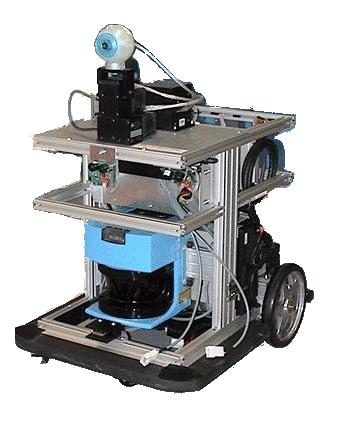Bayesian Approach to Action Selection and Attention Focusing
An Application in Autonomous Robot Programming
Autonomous sensory-motor systems, situated in dynamic environments, must continuously answer the ultimate question: how to control motor commands knowing sensory inputs?
Solving this question is a very complex problem, because a huge flow of information must be treated under several restrictions: real-time constraints, bounded memory space, and limited processing power. One additional and major challenge is to deal with incomplete and imprecise information, usually occurring in dynamic environments.
In this thesis, we address the problem of controlling autonomous
sensory-motor systems and propose a succession of cumulative hypotheses
and simplifications. They are defined within a precise and strict
mathematical framework, called Bayesian programming, an extension of Bayesian
networks. This succession consists of five stages:
- Internal states summarise the sensory-motor situation to simplify modelling and break the exponential degradation in performance because of dimensionality;
- The first-order Markov assumption, stationarity and Bayes filters reduce time dependence without neglecting the influence of the past;
- Partial independence between different domains of interest can be exploited to reduce further the dimensionality of the problem while preserving coherence in system decisions;
- A behaviour selection mechanism expresses the global behaviour as composed of a repertoire of simple and independent motor patterns;
Each description of a stage is followed by its analysis according to memory requirement, processing complexity, and difficulty of modelling. Further discussions regarding robot programming and cognitive modelling points of view are also presented.
- Attention focusing, guided by behaviour intention, reduces preprocessing time of incoming perception data.
Finally, we describe an implementation on a mobile robot. The results demonstrate that the proposed framework is adequate for practical purposes.
Preliminary Version of Thesis Document (5Mb)
Video of Robot Experiments:
Video1
Video2
Video3
Video4
Video5
